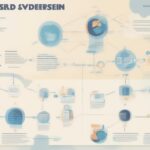In an age where artificial intelligence is becoming increasingly prevalent, understanding the underlying principles of neural networks and deep learning is more important than ever. Neural networks, which are inspired by the structure and function of the human brain, serve as the backbone of many sophisticated machine learning systems, especially in tasks like image recognition. This article seeks to clarify the foundation of neural networks and how they function, offering a glimpse into their fascinating yet complex world.
The Basics of Neural Networks
At its core, a neural network is a collection of interconnected nodes, or "neurons," organized in layers. Each neuron holds a value between 0 and 1, which reflects its activation based on the input it receives. For example, in a neural network designed to recognize handwritten digits, each neuron in the input layer corresponds to a pixel in a 28×28 pixel image—resulting in a total of 784 neurons for the input layer. Each pixel’s grayscale value is fed into these neurons, where brighter pixels equate to higher activation values.
Transitioning from the input layer, the network contains one or more hidden layers, where a series of additional neurons perform computations to derive meaningful patterns from the inputs. The final layer consists of output neurons that represent potential classifications—in this case, the digits from 0 to 9. The goal of the network is to determine which digit a given image represents based on the activation levels across these layers.
The Role of Layers in Processing Information
The layered structure of neural networks is crucial for their ability to learn complex representations. By sequentially processing the inputs, each layer extracts and transforms features. For example, early hidden layers might focus on basic features such as edges or colors, while deeper layers can identify more abstract combinations, such as shapes or full digits.
The interaction between these layers is facilitated by connections that have associated weights. These weights are numeric values that influence how strongly a neuron’s output affects the neurons in the subsequent layer. Adjusting these weights during the training process allows the network to learn from its mistakes and improve its accuracy in recognizing patterns.
Understanding Weights and Biases
Weights and biases are fundamental components in determining how each neuron activates in response to its inputs. The activation of a neuron in one layer is calculated by taking the weighted sum of inputs from the previous layer, followed by the application of an activation function—often the sigmoid function, which squashes the output to fall between 0 and 1. The concept of biases serves as an added layer of flexibility, allowing neurons to remain inactive until an appropriate threshold is met. This is critical when identifying complex patterns, as it permits the model to ignore irrelevant noise or weak signals.
Learning in Neural Networks
The learning process in neural networks fundamentally revolves around adjusting the weights and biases to minimize the difference between the predicted output and the actual target output (the correct digit in the case of digit recognition). This adjustment occurs through a method called backpropagation, which iteratively optimizes the parameters based on their contribution to the output error.
As the model trains on various samples, it refines the weights and biases, developing an ability to generalize from the data it encounters. This process allows the network to correctly classify not just the examples it has trained on but also new, unseen images of handwritten digits.
Applications Beyond Digit Recognition
While recognizing handwritten digits is a classic application for illustrating neural networks, their potential extends far beyond this scope. Neural networks can be applied to a plethora of tasks including image and speech recognition, natural language processing, and even more complex problems like generating creative content or playing games.
The ability of neural networks to parse complex tasks into manageable components reflects a broader trend in deep learning where layered architectures help break down intricate problems into simpler, solvable parts. This hierarchical approach not only streamlines the learning process but also enhances the effectiveness and accuracy of the models.
Final Thoughts
Neural networks represent a powerful tool in the machine learning toolkit, enabling computers to perform tasks that were once considered the exclusive domain of human intelligence. By mimicking the structure of the brain, these networks process and learn from data effectively. Understanding the foundation of neural networks, including their structure, operation, and learning mechanisms, is essential for anyone venturing into the world of AI and machine learning. As technology continues to evolve, so too will the implications and applications of these fascinating systems.

